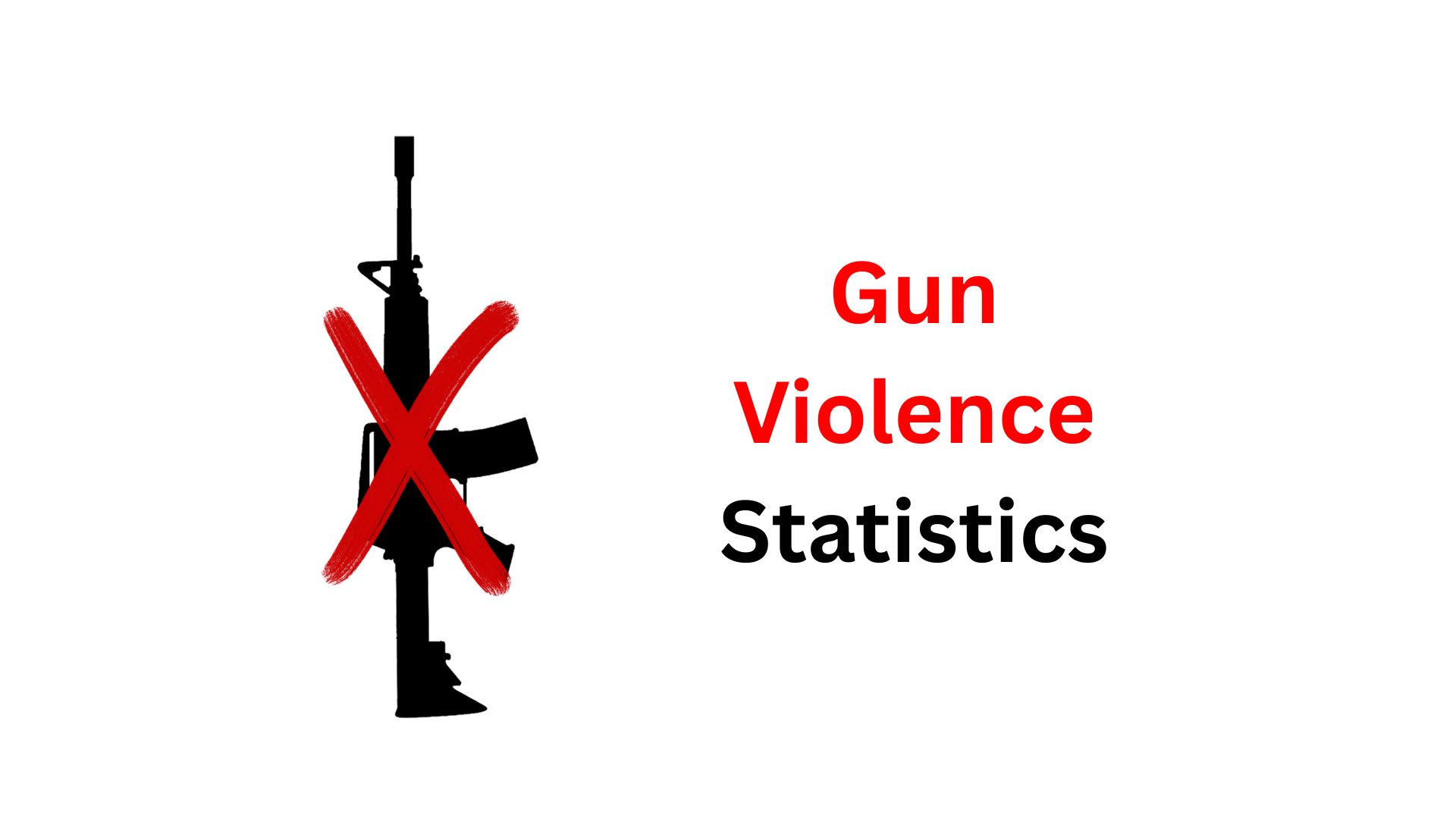Nanotechnology In Electronics Statistics By Market Size And Facts
Updated · Feb 20, 2025
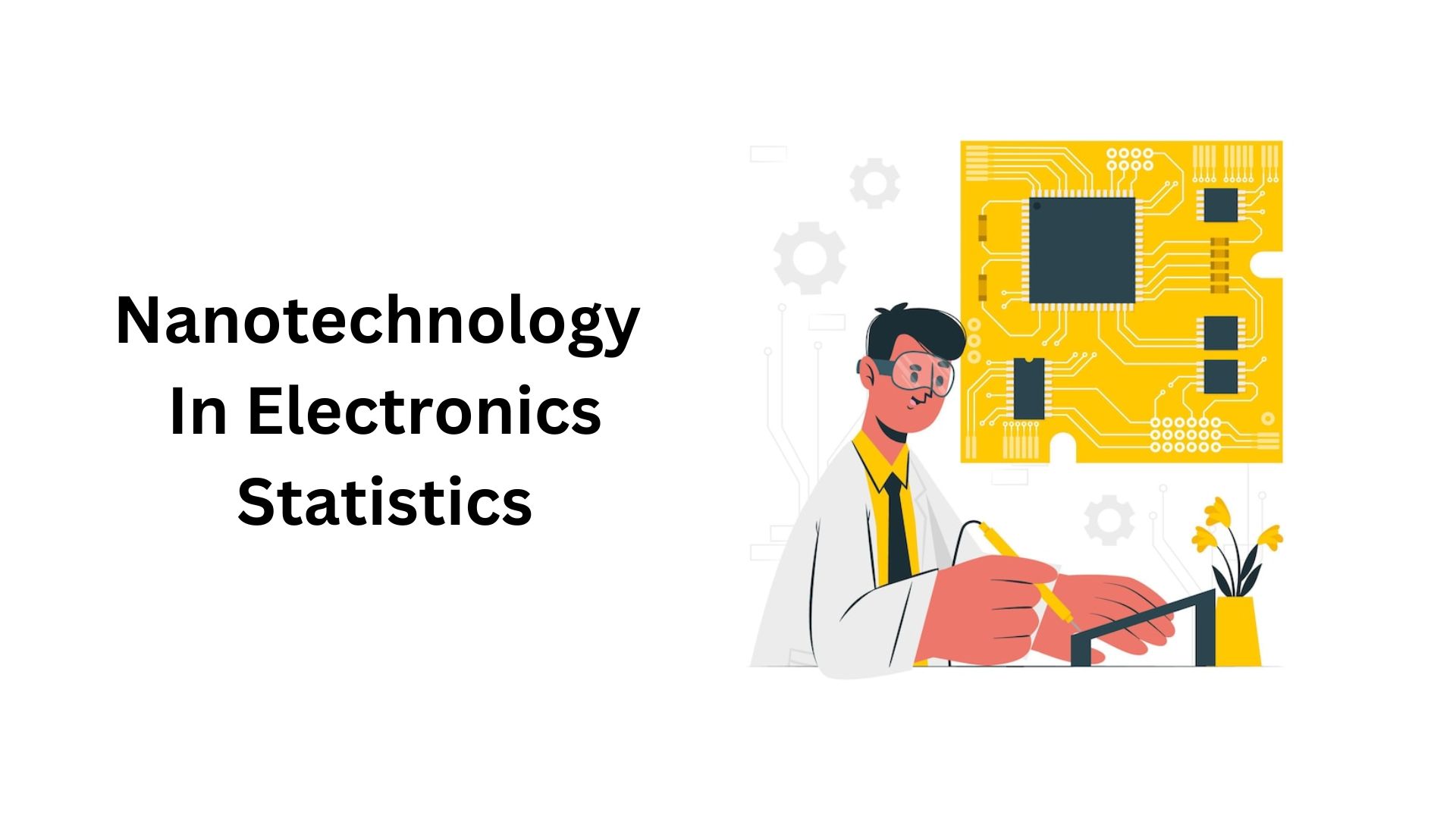
Table of Contents
Introduction
Nanotechnology In Electronics Statistics: Nanotechnology is the technology of manipulating materials at the atomic or molecular scale, and it has had a transformative impact on the electronics sector. Nanotechnologies have revolutionized the electronics industry through the production of devices that are smaller, faster, and consume less energy.
The Nanotechnology in Electronics statistics on different subjects in 2025 in terms of market size, growth rate, division among regions, and primary applications are covered in this paper.
Editor’s Choice
- Nanotechnology in Electronics statistics state that the medical and pharmaceutical area leads to a 30% market share in the field of nanotechnology, whereas chemicals and advanced materials follow by 29%.
- 21% of nanotech applications are in ICT–all Fletcher nanochips and fast microprocessors.
- Energy holds a 10% interest and emphasizes nano-panels and advanced batteries.
- The automotive industry accounts for 5% of nano-technology applications while focusing on the production of materials for lightweight and fuel efficiency.
- As per Nanotechnology in Electronics statistics, the global nanotechnology market was valued at an amount close to US$91.18 billion in 2024 and foretells to reach US$207.07 billion by 2029 at a CAGR of 15.03%.
- The nanoelectronics segment is estimated to hold a value of US$145.55 billion in 2024 and grow with a CAGR of 21.99% until 2029.
- North America dominates the nanoelectronics market with a market dating towards 42.82%, followed by Europe with 24.48%.
- Nanotechnology in Electronics statistics shows that the market size in 2022 was determined to be US$31.1 billion and is expected to rise to US$115.4 billion in 2030 at a growth rate of 17.8%.
Nanotechnology-Based Product
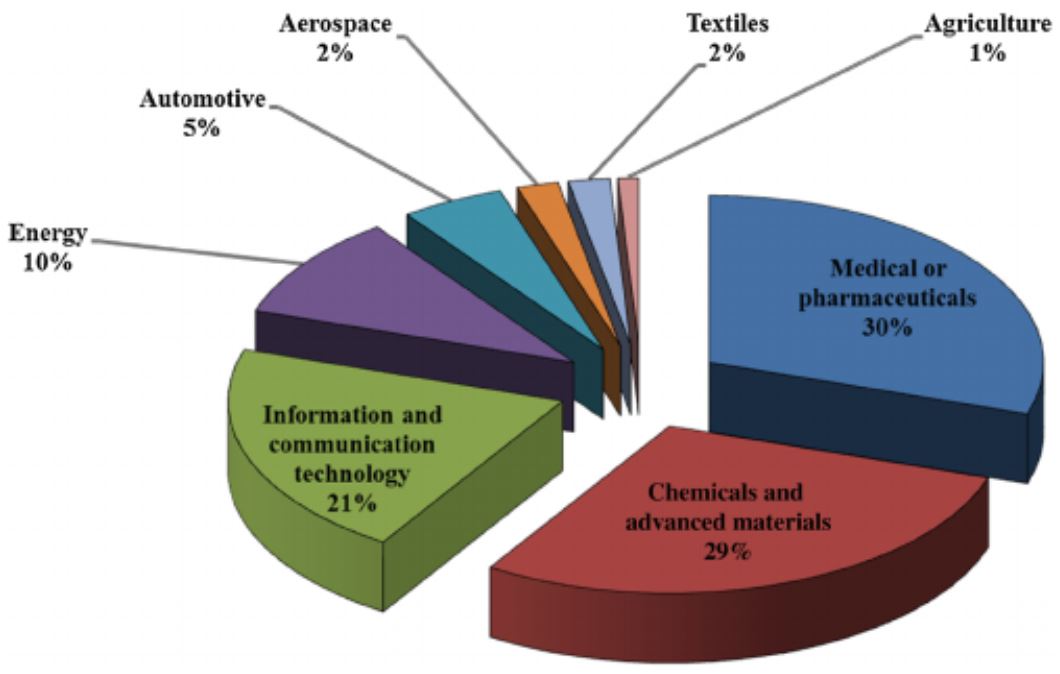
(Source: researchgate.net)
- Nanotechnology has been established across several sectors in varying proportions.
- Nanotechnology in Electronics statistics state that the medical and pharmaceutical sector leads in the market, having a major share of 30% of nanotechnology applications due to advancements in drug delivery systems, diagnostics, and nano-based treatments that increase the effectiveness of medical therapies and enhance patient outcomes.
- Closely following the same, the chemicals and advanced materials sector form 29% of the market.
- Nanotechnology is used to produce stronger, lighter, and more durable materials that have highly improved properties for applications in coatings, catalysts, and specialty chemicals. Information and communication technology is the next major area, with a share of 21%.
- Nanotechnology has been playing a key role in realizing high-speed processors, memory chips, and advanced semiconductors, all of which give way to faster and more efficient computing and data storage solutions.
- The energy sector is another, which carries 10% of potential revenue, valued by nanotechnology in the fields of solar fail panels, advanced batteries, and energy storage—these innovations make efficiency and sustainability with minimal environmental impact possible while improving the efficiency of diagnosis, evaluation, medical monitoring, and treatment for patients as well as the general public. The automotive industry takes up about 5% of nanotechnology-based applications.
- It improves vehicle performance and onboard efficiency through nano-coatings, nano-lightweight materials, and superior fuel efficiency technologies.
- Aerospace and textiles each contribute 2% of the total share with an increase in fuel efficiency, durability, and fabric properties such as stain resistance and breathability.
- Nanotechnology in Electronics statistics reveals that agriculture constitutes a 1% share wherein nanotechnology is harnessed for precision farming, nano-fertilizers, and pesticide delivery systems to enhance crop yield and sustainability. Although the present share is quite small, continuous research indicates that its impacts on agriculture will increase in the coming times.
Nanotechnology In Electronics Market Size
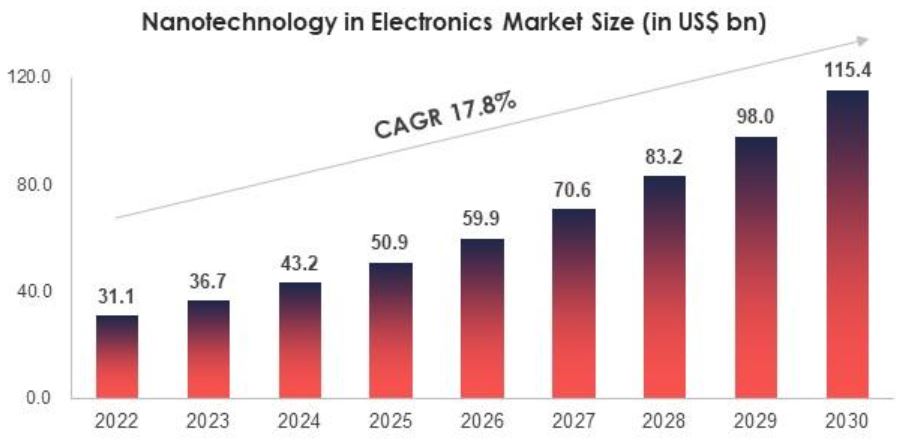
(Source: slideteam.net)
- Nanotechnology in Electronics statistics show that the projected growth of nanotechnology in the electronics market is defined from 2022 to 2030, measured in billions of U.S. dollars.
- The market was valued at US$31.1 billion in 2022 and has been growing at a compound annual growth rate (CAGR) of 17.8%.
- The market size increased to US$36.7 billion in 2023 after steady growth.
- In 2024, the upward trend is expected to bring the market up to US$43.2 billion. There will be great demand for electronics driven by nanotechnology in all aspects, such as miniaturization, improved efficiency, and performance enhancement.
- By reference, market size will be measured at US$50.9 billion in 2025, a very considerable increase over the previous year.
- Growth continues, with the market reaching US$59.9 billion in 2026 as more industries adopt nanotechnology solutions for electronic components, storage devices, and semiconductor advancements.
- Nanotechnology in Electronics statistics reveals that more years will show acceleration in growth within the market, expected to reach US$70.6 billion in 2027 and US$83.2 billion just the following year. Increasing dependence on nanomaterials, flexible electronics, and nanosensors is surely contributing to the rise.
- The market is projected to reach US$98.0 billion by 2029 and an estimated US$115.4 billion by 2030, quintupling in size compared with 2022. As indicated by this rapid growth, nanotechnology is going to play a very significant role in improving electronic devices to be generally faster, smaller, and energy-efficient compared to what they were, thus transforming many industries that derive their relevance from electronic components.
Nanotechnology Market Value
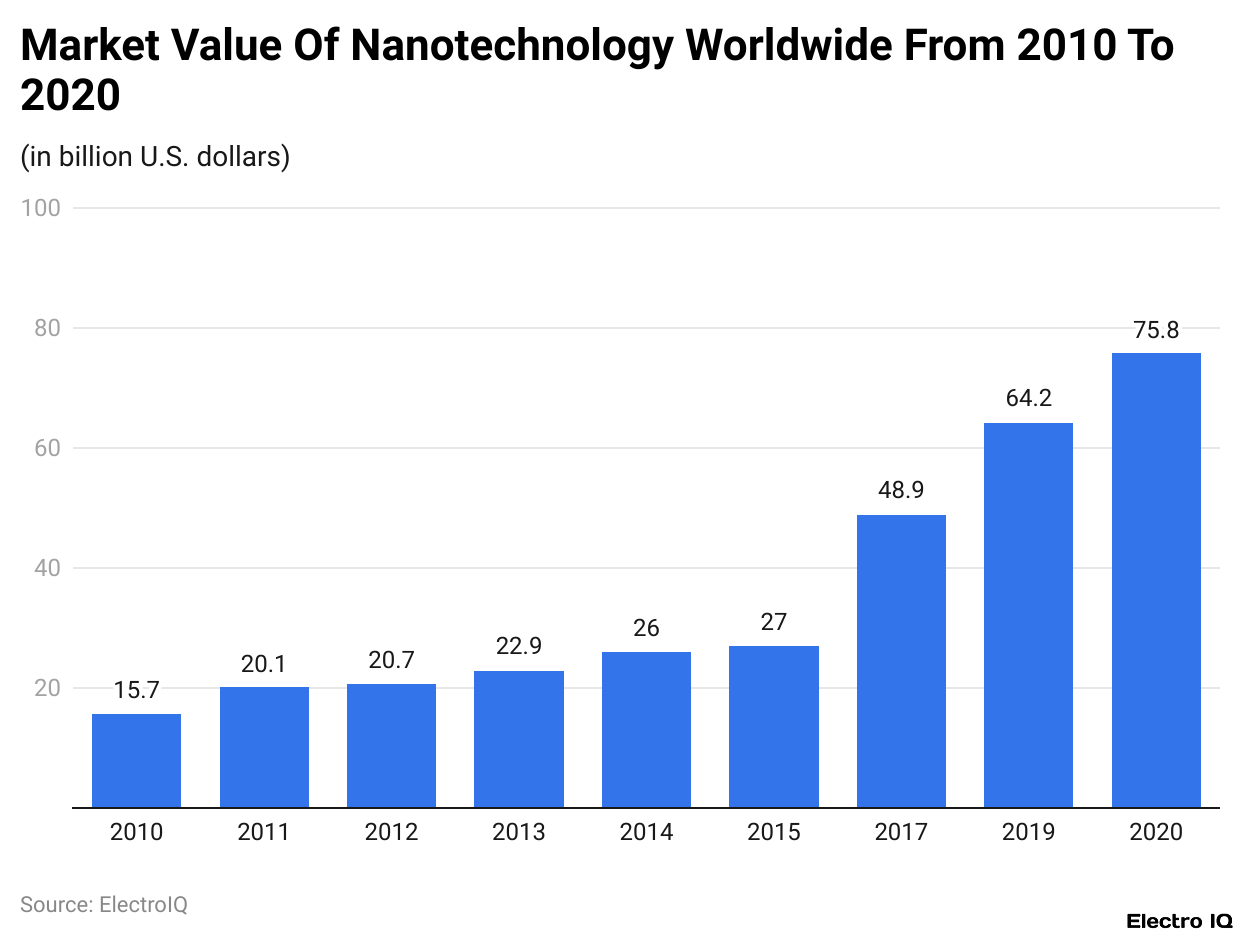
(Reference: statista.com)
- Nanotechnology in Electronics statistics indicates that Nanotechnology is the manipulation of matter at the scale of nanometers. The applications of this technology could be extremely exciting across the industries.
- It continues to grow into a domain structured for research and applied development that can expand practicality in realms such as medicine, electronics, and energy.
- In 2017, this progressive, promising technology reached a world market value of about US$49 billion, and it was estimated in recent emerging investments that are being proposed.
- The global market is projected to reach nearly US$76 billion by 2020, showing considerable growth within just a few years.
- This growth reflects an increasing demand for nanotechnology-generated solutions arising out of new material, healthcare, and information technology advances.
- The industries are moving into integration and exploration of nanotechnology, and the market is expected to grow further in the future.
Key Market Drivers
- Nanotechnology in Electronics statistics states that The absolute pioneer in the use of nanotechnology has been the current requirement for miniaturization and performance in electronic devices. In producing high-performance transistors, sensors, and flexible electronic components, nanomaterials such as graphene and carbon nanotubes are utilized.
- Nanotechnology has proliferated into biomedicine in connection with drug delivery systems and diagnostic devices.
- The intrinsic properties of nanomaterials improve the solubility of drugs, their stability, and the targeting of these drugs to provide the best therapeutic outcome.
- There are currently developing nanomaterial energy storage devices as a solution for the much-desired energy efficiency. Nanomaterials, for instance, have been used to make large-capacity and fast-charge batteries that make electric vehicles charge in less time.
Challenges
- Nanotechnology in Electronics statistics reveals that finally, it requires high investments in specialised equipment and skilled personal efforts in developing new nanomaterials and their applications, leading to heavy expenditures on R&D.
- The rapid expansion of nanomaterials has led to demands on health and environmental impacts on the materials, which are important for comprehensive studies and legislative frameworks.
- The incorporation of nanotechnology in electronics is set to speed up. With continuing advances and increased applications through various sectors, the market will witness very good growth.
- Companies have invested heavily in research into nanotechnology to engineer new kinds of products meeting potential consumer and industrial needs.
Conclusion
According to Nanotechnology in Electronics statistics, the year 2024 is pivotal and promising for the huge applications of nanotechnology in electronics. It makes the devices smaller, reduces the cost of manufacturing, and improves the functionality of the devices. This is also going to be true for healthcare, energy, and other long-existing industries such as automotive.
As the market grows with rapid advances and the increased number of applications, nanotechnology implies ever-increasing responsibility in future electronics.
Sources
FAQ.
The nanotechnology in the electronics market is reaching a value of about USD 43.2 billion in the year 2024 and is estimated to exhibit a CAGR of 17.8% to touch USD 115.4 billion by 2030.
Medical and pharmaceutical sectors lead in terms of application with a 30% share, followed by chemicals and advanced materials (29%), information and communication technology (21%), energy (10%), and automotive (5%).
North America continues to retain 42.82% market share of nanoelectronics, while Europe has a share of 24.48%.
Technological advancements in electronics, increased medical applications, and demand for energy-saving devices like high-storage batteries and solar panels have become the driving forces of growth.
The main challenges in R&D are costs and possible environmental and health concerns, the latter requiring further regulatory frameworks and safety studies.

Joseph D'Souza founded ElectroIQ in 2010 as a personal project to share his insights and experiences with tech gadgets. Over time, it has grown into a well-regarded tech blog, known for its in-depth technology trends, smartphone reviews and app-related statistics.




